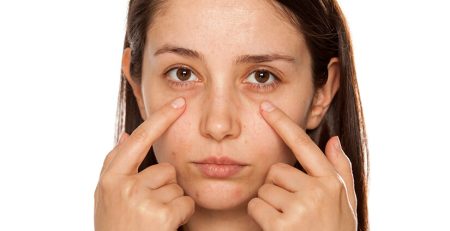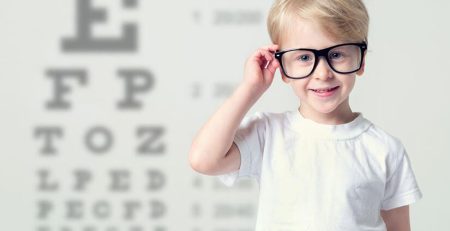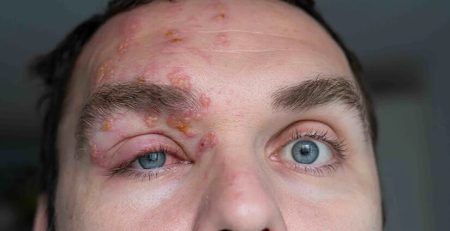What Is Lazy Eye? How Is It Treated?
Imagine a world where your eyes don’t perceive the world equally. A condition that affects your vision, making one eye significantly weaker while the other carries the burden of seeing clearly. This is the intriguing and enigmatic world of lazy eye, scientifically known as amblyopia.
Lazy eyes cause one eye to become weaker and less efficient than the other. This visual misalignment not only leads to reduced clarity but can also impact depth perception and overall visual development. But fear not; it can be treated with early detection and the best eye doctor in Delhi.
Let’s understand clearly the lazy eye and its causes.
What is Lazy Eye?
A lazy eye, also known as amblyopia, is a vision disorder characterised by reduced vision in one or both eyes that is not caused by any structural abnormality of the eye itself. It typically occurs during childhood and results from the brain and the eye not working together properly.
For vision to occur, the eyes and the brain must work together. The retina, located at the back of the eye, sends nerve signals to the optic nerve, which then transmits these signals to the brain. The brain interprets these signals as the images we see. When one eye or both eyes are weak, and the brain is unable to see clearly during the early years of life, it becomes lazy and unable to see even when we correct the cause. This is more profound if both eyes have unequal vision. In this case, the brain may begin to favour the stronger eye and neglect the signals from the weaker eye.
If left untreated, the lazy eye can deteriorate further over time. However, consulting with the best eye specialist in Delhi can help to address this condition and achieve better outcomes.
Causes of Lazy Eye
Lazy eye, or amblyopia, can be caused by various factors that affect the development or functioning of the visual system during childhood. Here are some common causes:
Strabismus
Strabismus is a misalignment of the eyes, where one eye may turn inward (esotropia), outward (exotropia), upward (hypertropia), or downward (hypotropia). The misalignment causes the brain to receive conflicting visual signals from each eye, suppressing the image from the misaligned eye and developing amblyopia. However, early diagnosis through the best eye doctor in Delhi will help to manage it.
Refractive Errors
Significant differences in the refractive power of each eye can contribute to lazy eyes. Refractive errors include nearsightedness (myopia), farsightedness (hyperopia), and astigmatism. If one eye has significantly better focus than the other, the brain may rely more on the clearer eye, resulting in the weaker eye’s reduced visual development. Also, very high powers in both eyes, even if equal, if not corrected with glasses will lead to lazy eye or amblyopia in both eyes.Dr Anisha Gupta will perform the test and prescribe eyeglasses or contact lenses to correct the condition.
Eye Obstruction
Anything obstructing or hindering the clear passage of light to the eye can cause amblyopia. This can include conditions like cataracts, which cause clouding of the eye’s lens, squint or other eye conditions that result in a significant difference in visual input between the two eyes. The best eye specialist in Delhi will perform the complete eye test to check other underlying causes for lazy eyes.
Childhood Conditions or Diseases
Certain childhood eye conditions or diseases, such as congenital ptosis (drooping of the eyelid), childhood glaucoma, or retinoblastoma (a rare eye cancer), can lead to lazy eye if they affect the visual development in one eye.
The best eye doctor in Delhi will prescribe a suitable treatment based on the severity of the condition.
Symptoms of Lazy Eye
Lazy eye, or amblyopia, typically manifests with the following symptoms:
- Poor vision in one eye
- Squinting or closing one eye
- Eye misalignment
- Depth perception problems
- Head tilting
- Poor eye-hand coordination
Diagnosis of Lazy Eye
The diagnosis of lazy eye, or amblyopia, typically involves a comprehensive eye examination conducted by the best eye specialist in Delhi. The evaluation assesses visual acuity, eye alignment, and overall eye health.
- Visual acuity test to assess the visual acuity of each eye, usually using an eye chart. This test determines how well each eye can see at various distances.
- Refraction testing helps determine if there are any significant refractive errors (such as nearsightedness, farsightedness, or astigmatism) in either eye.
- The eye care professional will examine the eyes’ alignment to detect any strabismus (misalignment). This may involve observing the eyes as the person focuses on different objects or using additional tests like the cover-uncover test.

Treatment for Lazy Eye
Early intervention is crucial for successfully treating lazy eyes (amblyopia), especially during childhood when the connections between the eye and the brain are still developing. Treatment initiated before the age of 7 tends to yield the best results, but even children between 0 and 12 can respond positively to treatment.
The specific treatment options for lazy eye may include:
Eyeglasses
A lazy eye can be associated with significant differences in the prescription or focusing power between the two eyes. The best eye doctor in Delhi prescribes eyeglasses or contact lenses to correct these refractive errors. By providing clear and equal vision in both eyes, eyeglasses or contact lenses help promote balanced visual input and support the development of the lazy eye.
Patching
Patching involves covering the stronger eye with an adhesive patch for a prescribed period each day. By blocking the vision in the stronger eye, the brain is forced to rely on the weaker eye, stimulating its development and improving vision. Patching is often combined with other treatments.
Vision Therapy
Vision therapy involves a series of exercises and activities designed to improve eye coordination, focusing ability, and visual processing skills. It may include eye-tracking exercises, convergence exercises, and stereograms. Dr Anisha Gupta uses vision therapy in conjunction with other treatments for the best outcome.
Atropine Eye Drops
Instead of patching, atropine eye drops may temporarily blur the vision in the stronger eye. This encourages the use of the weaker eye and stimulates its visual development.
Surgery
In some cases, Dr Anisha Gupta may prescribe surgery. Surgery for lazy eye, or amblyopia, is primarily performed in cases where the condition is associated with misalignment of the eyes (strabismus) or cataracts or some other operable cause that is preventing visual stimulus to the brain.
Strabismus surgery involves adjusting the eye muscles to align the eyes properly, promoting the binocular vision and improving the function of the lazy eye.
Cataract surgery involves removing and replacing the cloudy lens with an artificial lens to enhance visual input to the affected eye.
Surgical intervention is typically considered when deemed necessary by the best eye doctor in Delhi and along with surgery other treatments have to continue for visual improvement.
Conclusion
Lazy eye, also known as amblyopia, is a condition that affects vision, usually in one eye. Early detection and intervention are crucial for successful treatment. Treatment focuses on localising the cause and then treating accordingly. Various treatment options, including eyeglasses or contact lenses, patching, vision therapy, and, in some cases, surgery, can help improve vision and strengthen the connection between the eye and the brain. It is important to consult with an experienced eye care professional for a proper diagnosis and personalised treatment plan.
If you or your child are experiencing symptoms of lazy eyes or have concerns about vision, don’t hesitate to contact Dr Anisha Gupta, the best eye doctor in Delhi. Dr Anisha Gupta can provide a comprehensive evaluation, accurate diagnosis, and personalised treatment plan to help improve vision and ensure optimal eye health.











